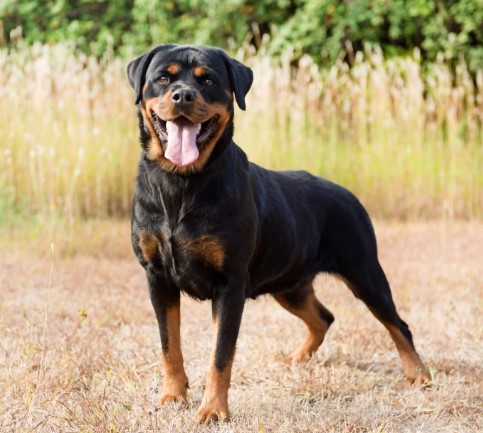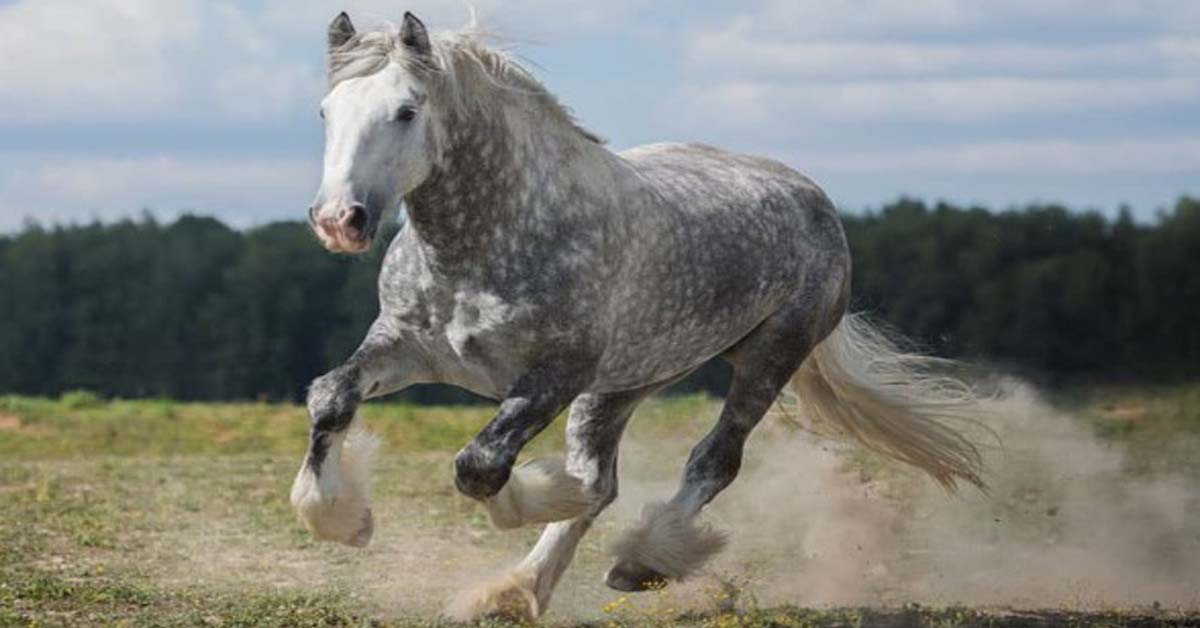The Tonkinese Cat emerges from the deliberate crossbreeding of Siamese and Burmese cats. These feline companions inherit vibrant and playful personality traits from their parent breeds, showcasing distinctive pointed coat patterns in a variety of colors.
Beyond the customary “mink” pattern characterized by diluted coat colors, the breed is now showcased in Siamese and Burmese colorations as the foundation, encompassing shades such as white and solid overall pointed patterns.
While the short-haired Tonkinese is the most widely recognized variant, there exists a medium-haired variation that enjoys greater popularity in Europe, particularly in countries such as the Netherlands, Germany, Belgium, and France.
- Tonkinese Cat Origin: United States
- Tonkinese Cat Lifespan:10 – 16 years
- Tonkinese Cat Length: Up to 28 inches
- Tonkinese Cat Height: 7–10 inches
- Tonkinese Cat Weight: 2.5 – 5.5kg
- Tonkinese Cat Colors: Come in a variety of colors but are typically darker on the legs and tail, with a dark masked face that blends evenly into the lighter body color.
Tonkinese Cat Characteristics
The Tonkinese cat falls into the category of medium-sized breeds, with males weighing between 8 to 12 pounds and females ranging from 6 to 8 pounds. Sporting glossy eyes that are rounded at the bottom and exhibit a peach-pit shape, these felines, when provided with proper care, can enjoy a lifespan of 12 to 16 years.
Characterized by round, wedge-shaped heads, and prominent high cheekbones, Tonkinese cats feature squarish, blunt muzzles of equal length and width. An unmistakable trait is their alert ears with a broad base and oval tips adorned with short hairs.
Almond-shaped eyes proportionate to the face contribute to the overall allure of Tonkinese cats. Possessing a medium-sized body, a medium-short coat with a silky sheen, and 12 distinctive patterns and color varieties, these cats showcase tail, ear, and face colors known as points, including blue, natural, champagne, and platinum.
Tonkinese cats exhibit a diverse coat palette encompassing chocolate, cinnamon, red, blue, fawn, cream, lilac, and seal, regardless of which the coat remains short and close to the body. One of their standout features is the aqua eye color, though pointed Tonkinese may also have Siamese-like bright blue eyes ranging from sky blue to violet. On the other hand, solid pattern Tonkinese showcase eye colors ranging from green-gold to yellow-gold, reminiscent of the Burmese breed.
| PLAYFULNESS: 4Point | NEED FOR ATTENTION: 4Point |
| ACTIVITY LEVEL: 5Point | AFFECTION TOWARD ITS OWNERS: 4Point |
| FRIENDLINESS TO OTHER PETS: 4Point | DOCILITY: 3Point |
| FRIENDLINESS TO CHILDREN: 4Point | INTELLIGENCE: 4Point |
| GROOMING REQUIREMENTS: 1Point | INDEPENDENCE: 2Point |
| VOCALITY: 4Point | HARDINESS: 3Point |

History Of Tonkinese Cat
Although systematic breeding of Tonkinese cats did not commence until the 1960s, it is highly probable that earlier versions of this breed existed for centuries. The roots of the Tonkinese can be traced back to Southeast Asia, where Burmese cats, originally referred to as “copper cats,” coexisted with Siamese cats, possibly due to intentional or unintentional crossbreeding.
In the late 1800s, the introduction of solid brown (self-brown) cats and chocolate Siamese cats from Siam to England marked an early chapter in the breed’s history. Alongside them came blue-eyed seal-point Siamese cats. Historical records describe these brown cats as “Siamese, with burnt chestnut and green-blue eyes.” Research suggests that these imports represented various genetic types, including what we now recognize as Burmese, Chocolate Point Siamese, Tonkinese, and Havana Browns. Distinguishing one from another in the available descriptions from that era poses a challenge.
Interestingly, the Wong Mau, a Burmese-based cat brought to the United States in the 1930s, was later identified as a Siamese/Burmese hybrid and would, by today’s standards, be classified as a Tonkinese. These Siamese and solid-colored cats were showcased in Europe during the late 1800s and early 1900s.
However, the popularity of such cats waned over time. In 1930, the Siamese Cat Club announced its regret, stating, “The Club deeply regrets that it is unable to encourage the breeding of blue-eyed Siamese.” Subsequently, solid-color cats without blue eyes were banned from competition, leading to their disappearance from the cat fancy.
The early 1960s
During the early 1960s, the Tonkinese breed embarked on its official recognition journey when Canadian breeder Margaret Conroy initiated a crossbreeding experiment between Sable Burmese and Seal Point Siamese.
The outcome was a cat displaying an intermediate temperament and type, initially dubbed “Golden Siamese” by Conroy. Notably, at the time of the Tonkinese’s inception, both Burmese and Siamese breeds had not yet undergone the refinement achieved through selective breeding.
The Siamese had yet to acquire its highly appealing appearance, and the Burmese were not characterized by their current compact and bushy form, nor their broad, round head shape. Merging these two breeds to establish a consistent head and body type posed a challenge for Tonkinese breeders.
In 1967, the name was changed to “Tonkinese” to differentiate the breed from the Siamese. Subsequently, in 1971, breeders voted to adopt the name “Tonkinese” in reference to the Gulf of Tonkin in southern China and northern Vietnam. Despite the breed’s origin not being tied to the Gulf of Tonkin area, the name possessed an appealing exotic quality.
Collaborating with other notable breeders, including Jane Barletta of New Jersey, Conroy contributed to the formulation of the first breed standard, which was presented to the Canadian Cat Association (CCA). Notably, the Tonkinese marked the first breed developed in Canada.
In 1971, the CCA made history by being the first cat registry to grant championship status to the Tonkinese. Subsequent recognition followed, with the CFF acknowledging the breed in 1974, TICA in 1979 (the same year the association was formed), and the CFA passing the “Five Year Rule” in October 1979.
The rule mandated new breeds to undergo five years in non-competitive classes before achieving championship status. In 1984, the CFA granted Tonkinese Breed Championship status, and by 1990, all major cat associations had embraced the breed for championships.
Appearance
The Tonkinese cat, classified as medium-sized, represents an intermediate type that bridges the slender, elongated form of the modern Siamese and British Burmese with the more robust, “cabbage-shaped American Burmese. In resemblance to their Burmese forebears, Tonkinese cats possess a deceptive muscularity, often feeling weightier than anticipated when lifted.
Their slender tail and legs maintain proportional harmony with the body, featuring distinctive oval claws. A gently rounded, slightly wedge-shaped head adorned with almond-shaped eyes and ears set towards the outer edges contributes to their distinctive appearance.
The American style of Tonkinese is characterized by a sculptural head, short body, and robust build, reflecting the influence of old-fashioned Siamese and rounded Burmese breeds that originally contributed to its development in the United States.
While some American breeders favored a return to more moderate “traditional” Burmese over the extreme “contemporary” Burmese, the initial Tonkinese breed standard drew inspiration from the highly rounded style of Burmese descended from Wong Mau.
To avoid inheriting defective genes present in the original Burmese line, new Tonkinese breeders steered clear of cats believed to carry the so-called lethal genes. Some older breeders navigated this challenge through selective breeding, effectively eliminating problematic births.
For those interested in tracing lineage, Tonkinese genealogies are accessible through databases dedicated to the breed.
Tonkinese Cat Temperament
Tonkinese cats boast personalities ideally suited for companionship. Dispelling any notions of being cold or distant, these sweet felines relish their role as lap cats, consistently offering affection to their families. Inheriting curiosity and intelligence from their Siamese lineage, Tonkinese cats also exude loving energy reminiscent of their Burmese ancestors.
Marilyn Krieger, a certified cat behavior consultant in San Francisco, emphasizes their outgoing nature, describing them as unequivocally “people’s cats.” She underscores the importance of companionship for Tonkinese cats, advising against leaving them alone for extended periods as they thrive on human interaction.
Tonkinese Cat Personality
Tonkinese cats, affectionately referred to as “tonks” by owners and cat enthusiasts, are recognized for their exceptional qualities of being affectionate, friendly, intelligent, and curious.
Taking after their ancestors, the Burmese and Siamese breeds, known for their amiable personalities and easygoing dispositions, Tonkinese cats thrive on human and feline companionship alike. Engaging in activities such as playing fetch, relishing climbing and perching, and expressing themselves with a unique meow that resembles a duck-like quack, this breed is known for its playful nature.
Given their high intelligence, Tonkinese cats may exhibit mischievous behavior if left alone for extended periods. To prevent boredom-induced mischief, it is essential to provide ample interaction and exercise for your Tonkinese companion.
Health
While Tonkinese cats are generally robust, they may be susceptible to certain health issues, including:
- Dental disease is a concern that can be effectively managed through regular dental care.
- Feline lower urinary tract disease leads to painful urination and potentially life-threatening complications.
- Inflammatory bowel disease (IBD), causes gastrointestinal discomfort, nausea, diarrhea, and vomiting.
- Amyloidosis is characterized by an abnormal accumulation of protein deposits in organs, commonly affecting the kidneys or liver.
Safeguarding the health of your Tonkinese entails regular veterinary check-ups and a well-balanced diet. Ensure your cat receives annual examinations and stays current on vaccinations to promote overall well-being.

Care
According to Kurt Venator, DVM, Ph.D., and Purina’s Chief Veterinary Officer, “Tonkinese cats are renowned for their meticulous self-grooming habits, requiring minimal attention in that aspect from their owners.”
To maintain their smooth and lustrous coats, these adorable felines only need weekly brushing and an occasional bath if they happen to get exceptionally messy. Routine tasks include nail trimming, regular ear cleaning, and keeping their litter box clean.
Known for their intelligence and athleticism, Tonkinese cats thrive on mental and physical stimulation. Interactive toys, cat trees, and opportunities for jumping and play contribute to their exercise routine.
Marilyn Krieger emphasizes the importance of providing mental engagement, stating, “They love games. You can roll treats for them to chase; if you have elevated spaces [like a cat tree], you can hide treats and food to encourage them to explore.”
Tonkinese cats are receptive to clicker training, notes Krieger. While highly intelligent and eager to learn, they can exhibit independent-mindedness. Utilizing treats and praise proves effective in motivating them to acquire new skills.
Maintaining a diet of high-quality cat food recommended by the vet is crucial for Tonkinese cats. Due to the breed’s susceptibility to weight gain, careful portion control is essential to prevent overfeeding.
Best Food For
- MUSE BY PURINA NATURAL GRAIN-FREE DRY CAT FOOD
- JAMES WELLBELOVED DRY SENIOR CAT FOOD
- PURINA BEYOND DRY CAT FOOD
Feeding
While every cat possesses its own distinct preferences and dietary requirements, it’s crucial to recognize that cats are inherently carnivores, necessitating the intake of 41 specific nutrients from their food.
The quantity of these essential nutrients fluctuates depending on factors such as age, lifestyle, and overall health. Consequently, the dietary needs of a lively, developing kitten differ from those of a less active senior cat.
Additionally, it’s imperative to consider feeding the appropriate quantity of food to sustain an ‘ideal body condition,’ aligning with dietary recommendations. Accommodating individual preferences, whether for wet or dry food recipes, is also a key aspect to keep in mind for a cat’s well-rounded nutrition.
Grooming
Maintaining the neatness and cleanliness of a Tonkinese is a straightforward task. A weekly grooming session using a bristle brush and a gentle wipe with a damp cloth provides an opportunity to assess the health of the skin and coat. Tonkinese cats are generally adept at self-grooming, and this routine helps ensure their well-being.
Should you notice a greasy coat, it may signify a lapse in self-grooming, possibly indicating underlying health concerns.
As is standard for all cats, it is advisable to adhere to a schedule of regular vaccinations and parasite control for the overall health and longevity of your Tonkinese companion.
Training
With their sharp intelligence, Tonkinese cats prove highly trainable and delight in acquiring new skills and engaging in various activities. Quickly grasping the concept of using the litter box, they may also communicate their preferred frequency for its maintenance. Renowned for their playful nature, Tonkinese cats can be taught tricks such as fetching, jumping through hoops, or walking on a leash.
Employing praise and rewards serves as effective positive reinforcement in fostering desired behaviors during training sessions with your Tonkinese companion.
Exercise
Tonkinese cats are typically eager play companions and benefit from daily exercise routines. They thoroughly enjoy interactive games like fetch and hide-and-seek, activities that get their hearts pumping with excitement. Their love for leaping high enables them to navigate a few laps around the house when brimming with energy.
Using a cat stick adorned with a feather or mouse at the end proves to be a stimulating toy, engaging your Tonkinese’s intellect and encouraging a lively chase. Dedicate daily moments to spend quality time with your Tonkinese, engaging in energetic play, which not only keeps them in excellent shape but also helps maintain a healthy weight.
Tonkinese Cat Adoption Center
The Tonkinese Breed Association (TBA) and the Cat Fanciers’ Association (CFA) both curate lists of breeders. If you are not well-versed in your cat’s documentation, exploring local shelters might lead you to a cat resembling a Tonkinese.
See More Cat Breeds For Further Research
FAQs
Tonkinese Cat Price
Purebred Tonkinese cats are relatively rare and typically come with a price range of $600 to $1,200 when acquired from a reputable breeder.
Are Tonkinese Cats Ideal Pets?
Tonkinese cats are renowned for their easygoing temperament. They are social and patient, particularly when given attention, making them an excellent choice for families with children.
Key Traits of Tonkinese Cats
Tonkinese cats are characterized by their active, intelligent, and athletic nature. They may exhibit playful behavior, especially when bored, and are known for their ability to open doors. Combining the smart and inquisitive traits of the Siamese with the calm personality of the Burmese results in the distinct characteristics of the Tonkinese.
Distinguishing Siamese from Tonkinese Cats
In terms of size, the Tonkinese cat is slightly smaller, shorter, and lighter than the average Siamese. Both breeds typically measure up to 15 inches in length and weigh up to 14 pounds. However, Tonkinese cats tend to be a bit smaller, with an average weight of around 12 pounds.
Maintenance Level of Tonkinese Cats
Cats, in general, are known for being low-maintenance pets. Tonkinese cats, with their short hair that doesn’t require frequent brushing, are easier to care for compared to the average cat. While they are generally low-maintenance, it’s important to note that some supervision and care are still necessary for the well-being of Tonkinese cats.












One thought on “Tonkinese Cat: All One Of The Best Information For You…”